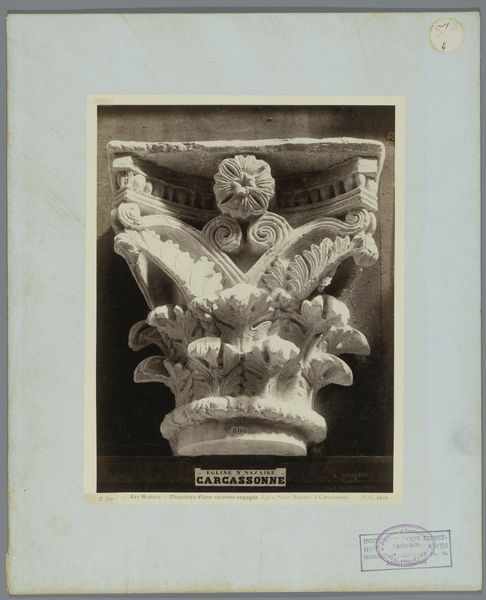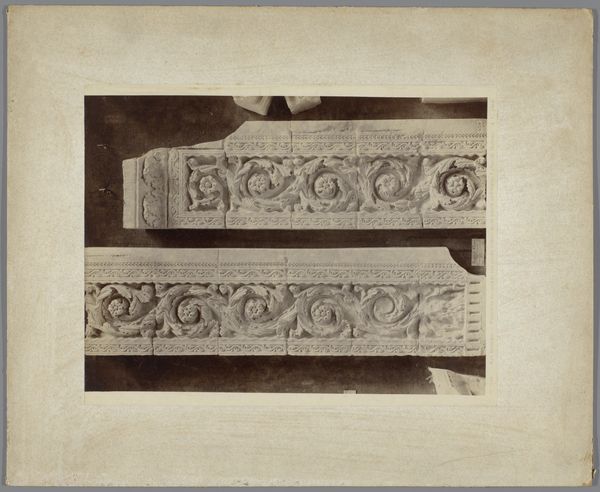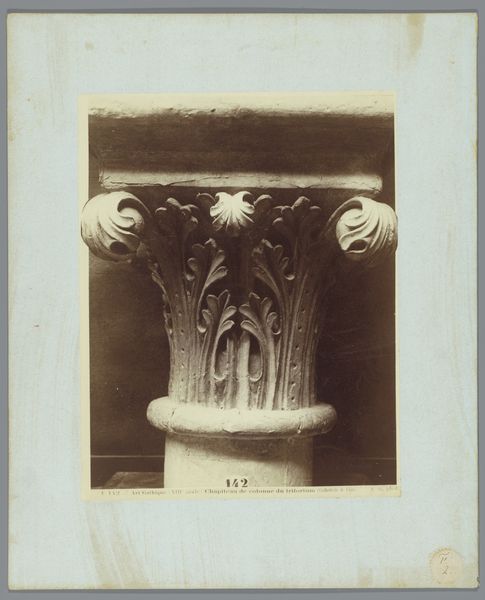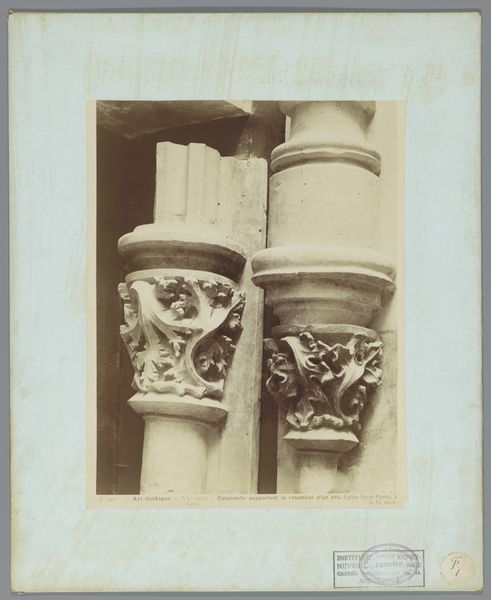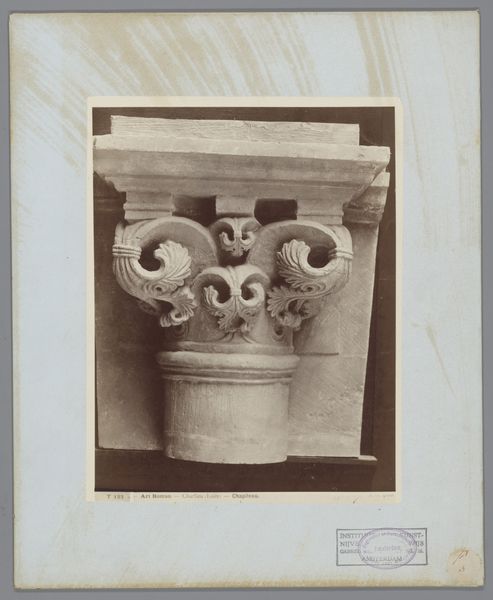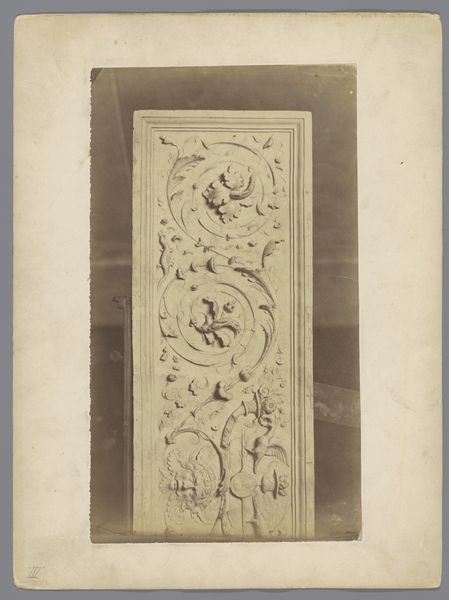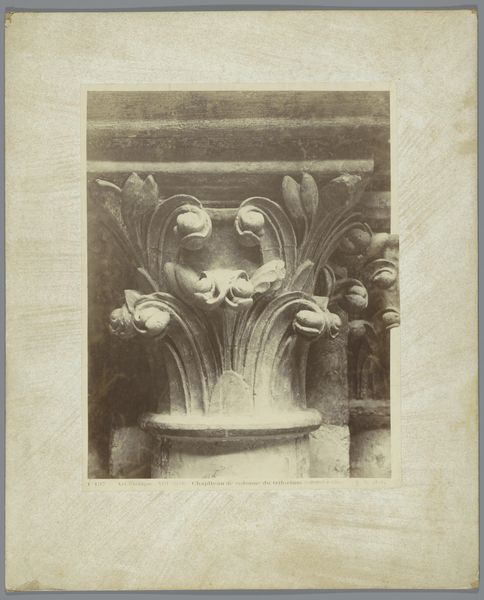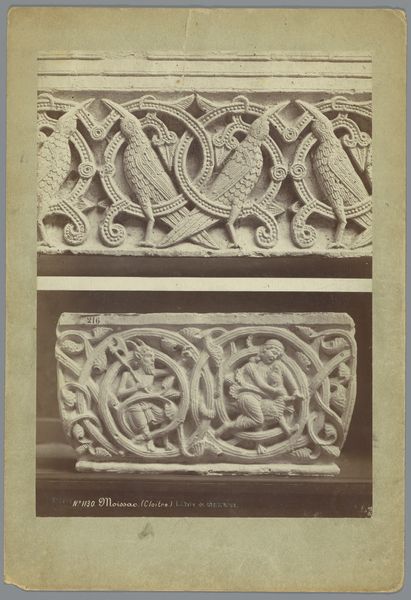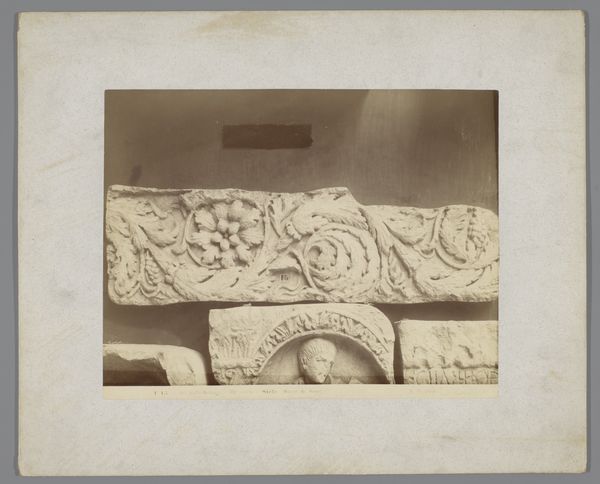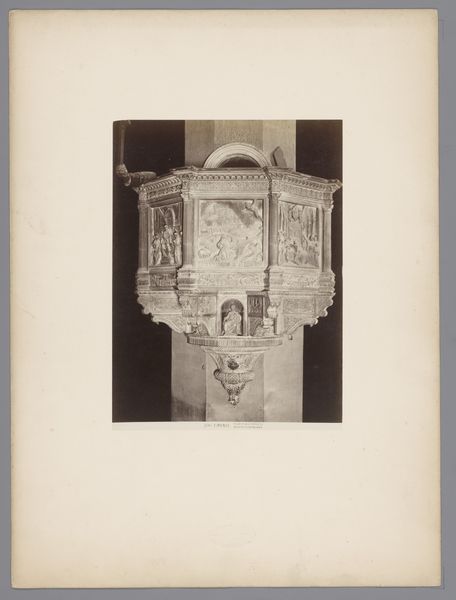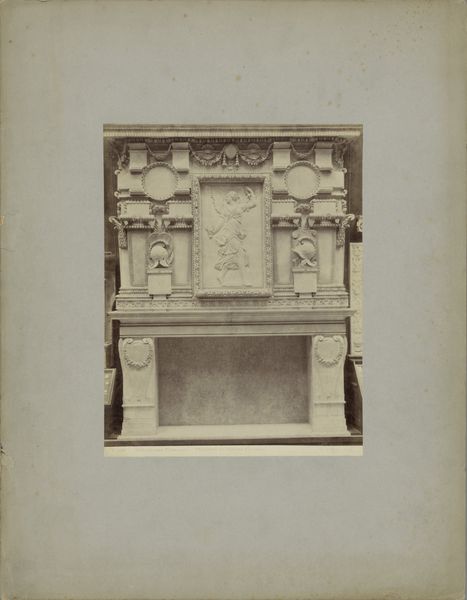
print, relief, photography, gelatin-silver-print, architecture
# print
#
relief
#
photography
#
romanesque
#
coloured pencil
#
ancient-mediterranean
#
gelatin-silver-print
#
architecture
Dimensions: height 260 mm, width 201 mm
Copyright: Rijks Museum: Open Domain
Curator: Ah yes, "Deel van het portaal van de Kathedraal van Aulnay," circa 1875-1900, a gelatin-silver print by Adolphe Giraudon, housed in the Rijksmuseum. What strikes you initially about this image? Editor: Well, the textures are amazing. You can almost feel the roughness of the stone. What’s interesting to me is how this photograph almost becomes a document of labor and skill that went into making the Portal of Aulnay. How would you interpret it? Curator: Precisely! I’m drawn to the materiality. Notice the photograph's stark contrast highlighting the carving’s textures, which underscores the labour-intensive processes involved in creating Romanesque architecture. It pushes us to consider the social conditions, perhaps feudal relationships, that facilitated such construction. We need to acknowledge the extraction of stone, the masons' expertise, and the organization of their workforce. Editor: So you're saying the photo is not just a representation, but also a trace of all these elements? Curator: Absolutely. Consider the context: the late 19th-century fascination with cataloging architectural heritage using photography. Photography allows for the broader distribution and consumption of architectural details previously confined to a specific location. Look at the careful framing; it transforms a functional part of a building into a portable art object for study or collection. The photograph shifts our perception from devotional space to an object of art historical inquiry. Editor: I see your point! It kind of disconnects the architecture from its original function, almost like an artifact removed from its site. Curator: Yes! It allows for a new form of consumption: an engagement that is mediated, aestheticized and potentially abstracted from its socio-religious roots. What new meaning do we assign these now portable portals? Editor: This is great. I'll never look at architectural photography the same way again! It’s a lesson in both material culture and labour practices. Curator: Indeed! And how the technologies used to record it change its meaning over time.
Comments
No comments
Be the first to comment and join the conversation on the ultimate creative platform.
